Flashback: a look back at Samsung's rugged flagships in the Galaxy S Active series

Samsung’s rugged XCover line dates back to 2010 and started off with feature phones, but even when it switched to smartphones it was never a premium line. For tough + premium there was the Galaxy S Active line.
The Samsung Galaxy S4 Active was introduced in 2013. This was the first S-phone with an IP rating for dust and water resistance – IP67, meaning “dust tight” and “immersion up to 1m/3.3ft” for half an hour. This was a year before the Galaxy S5, which had both an IP67 rating and a removable back cover (though as you may remember the S6 dropped the IP rating before the S7 reintroduced it).
There were a few downgrades, like the display was an LCD instead of Super AMOLED and was protected by Gorilla Glass 2 (instead of GG3 like on the regular S4). Also, the main camera was knocked down from 13MP to 8MP. Interestingly, the Galaxy S4 Active used a Snapdragon 600 chipset instead of the usual Exynos 5410 Octa. Samsung later released an Advanced version of the Galaxy S4 with a more powerful Snapdragon 800 and added an Active version of that one too
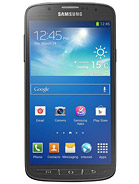
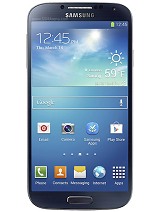


Samsung Galaxy S4 Active • Samsung Galaxy S4 • Samsung Galaxy S4 Active LTE-A • Samsung Galaxy S4
Next year brought the Galaxy S5, a phone that already had a dust and water resistance, so an S Active made even less sense. Still, the Galaxy S5 Active launched as an AT&T exclusive.
For the S5 Active it added MIL-STD-810F testing to the mix. The S Active phones also looked the part with grippy textures on their back panels and exposed screws.
 The Samsung Galaxy S5 Active looked the part
The Samsung Galaxy S5 Active looked the part
The Galaxy S5 Active one was a lot closer to the regular S5, with the same Super AMOLED display, same camera and same chipset. The only two downgrades were the missing wireless charging and the microUSB port, which was back to USB 2.0 (the Galaxy S5 was one of the few phones to use microUSB 3.0).
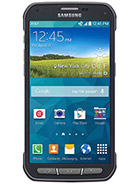

Samsung Galaxy S5 Active • Samsung Galaxy S5
You may have noticed the physical buttons on the front. Not that unusual for the era, the S4 and S5 still had physical Home buttons. However, the S Actives also had physical Back and Menu buttons instead of capacitive like on the city-slicker S-phones.
These work when wet and while you’re wearing gloves, capacitive buttons are a lot less reliable in such situations. Unfortunately, the new, chunky Home button didn’t have a built-in fingerprint reader (and the reader wasn’t relocated anywhere, the Actives just didn’t have one). Samsung missed the opportunity to add a customizable button for extra actions, though it did correct that mistake later on.
The Samsung Galaxy S6 Active was also an AT&T exclusive. This one was more necessary than the S5 Active as the regular S6 lacked the dust and water resistance of the S5. However, it was also the first Galaxy S with a non-removable battery and it got a lot of hate for that.
Surely the outdoorsy S6 Active had a user-accessible battery, right? Wrong, but at least Samsung bumped the capacity from 2,550mAh on the standard S6 to 3,500mAh on the S6 Active (and this time it kept the wireless charging). This had a massive impact on battery life as it boosted the Endurance rating in our tests from 73 hours to 109 hours. Everything else was more or less the same, save for the IP68 rating (up to 1.5m/5ft under water for 30 minutes).
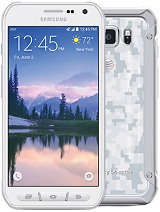
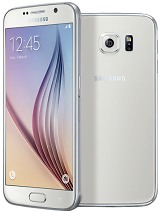
Samsung Galaxy S6 active • Samsung Galaxy S6
Another year, another rugged flagship. The Galaxy S7 reintroduced the IP rating (IP68), the Galaxy S7 Active just added MIL-STD-810G compliance on top of that. It had a plastic back instead of a glass one, which stood a better chance of surviving drops and knocks. The battery was larger again (4,000mAh vs. 3,000mAh), though this time it had a much smaller impact on the Endurance rating (96h vs. 80h).
The S7 Active used a Snapdragon 820 chipset instead of the Exynos 8890, but that’s less of a surprise considering that it was once again a phone built for AT&T.
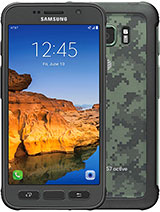
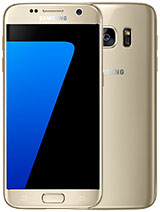
Samsung Galaxy S7 active • Samsung Galaxy S7
And check this out – the Home button had a fingerprint reader in it! Even better, the volume rocker on the side was replaced by the Activity button. Using the Activity Zone app you could set actions to be performed on a short press, long press and double press.


The Activity Zone app on the Galaxy S7 Active
By default a single tap launched the app, which showed handy info like weather, a barometer/altitude reading and compass. You could also turn on the flashlight, launch the camera to take a photo and so on, even if the phone was underwater.
 Hiking with the Galaxy S7 Active
Hiking with the Galaxy S7 Active
Flipping the calendar over to 2017 we find the Samsung Galaxy S8 Active. As you may recall, the Galaxy S8 was a major redesign that adopted a curved screen and dropped the buttons from the front. Finally, time for the physical buttons of S Active phones to shine... oops, they went away too, the fingerprint reader was relocated to the back. As for the front, at least Samsung stuck with a flat screen so you could more easily add a screen protector. The Activity Button went away too, replaced by the Bixby Button.
This year there were versions of the Galaxy S8 Active for AT&T, T-Mobile and Sprint. The chipset as the Snapdragon 835, same as the North American version of the regular S8. The battery was bigger once again, 4,000mAh vs. 3,000mAh (111h vs. 84h Endurance).

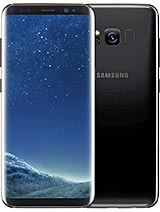
Samsung Galaxy S8 Active • Samsung Galaxy S8
This was the end of the Galaxy S Active series. An S9 Active passed through the rumor mill, but no such phone was ever released. Samsung didn’t give up on tough S-phones, instead it shifted to a different target market – the military.
The Samsung Galaxy S9 Tactical Edition had access to special tactical radios and apps with names straight out of a Hollywood movie – ATAK (Android Team Awareness Kit), KILSWITCH (Kinetic Integrated Lightweight SoftWare Individual Tactical Combat Handheld) and more.





Samsung Galaxy S9 Tactical Edition
Next up was the Samsung Galaxy S20 Tactical Edition. This too was loaded with tactical and classified applications plus a “DualDAR architecture” with two-layer encryption based on NSA standards.




Samsung Galaxy S20 Tactical Edition
The latest in the series is the Samsung Galaxy S23 Tactical Edition, which was joined by an XCover6 Pro Tactical Edition. These also had DualDAR protection along with things like ATAK, BATDOK (Battlefield Assisted Trauma Distributed Observation Kit) and DeX, which allows soldiers to access secure VPN.



Samsung Galaxy S23 Tactical Edition and XCover6 Pro Tactical Edition
There are Galaxy Tab Active tablets as well, which we skipped to focus on the phones. However, the most recent entry is the Galaxy Tab Active4 Pro from last year, so the tablets outlasted the S Active phones. But these are more like XCover tablets than a flagship offering (they are certainly not up to Tab S standards).
Chances are that Samsung will continue making Tactical Edition phones going forward, the XCover phones too (besides the military, Walmart is a fan of those). But we doubt that we’ll see another Galaxy S Active phone.
Other makers have mostly given up on rugged phones too, outside of the brands that specialize in it. For example, there is the Motorola Defy and Defy 2, but those were made by the Bullitt Group, which also makes Cat-branded phones. There are also the likes of Doogee and Oukitel who make workman phones with night vision cameras, thermal cameras and features that would be useful at the worksite.
Do you think there is still a place in the market for rugged flagships?
Related
Reader comments
- Labrador7
- 09 Feb 2025
- 7Pn
There is still unexploited room for Active phones. They would have to take an S25, give it a 5000 mAh battery as well as a Gorilla Glass Victus that works with gloves or when wet. You add satellite messaging and you have an Active flagship phone that...
- Minu
- 26 Oct 2023
- ter
It's extremely underrated for what it is, and relatively more durable and cheaper to produce than Type C
- Minu
- 26 Oct 2023
- ter
The "2020" model actually existed for sometime, called the "Galaxy XCover FieldPro"
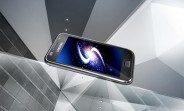







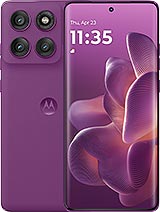 Motorola
Motorola Samsung
Samsung OnePlus
OnePlus Honor
Honor Samsung
Samsung


